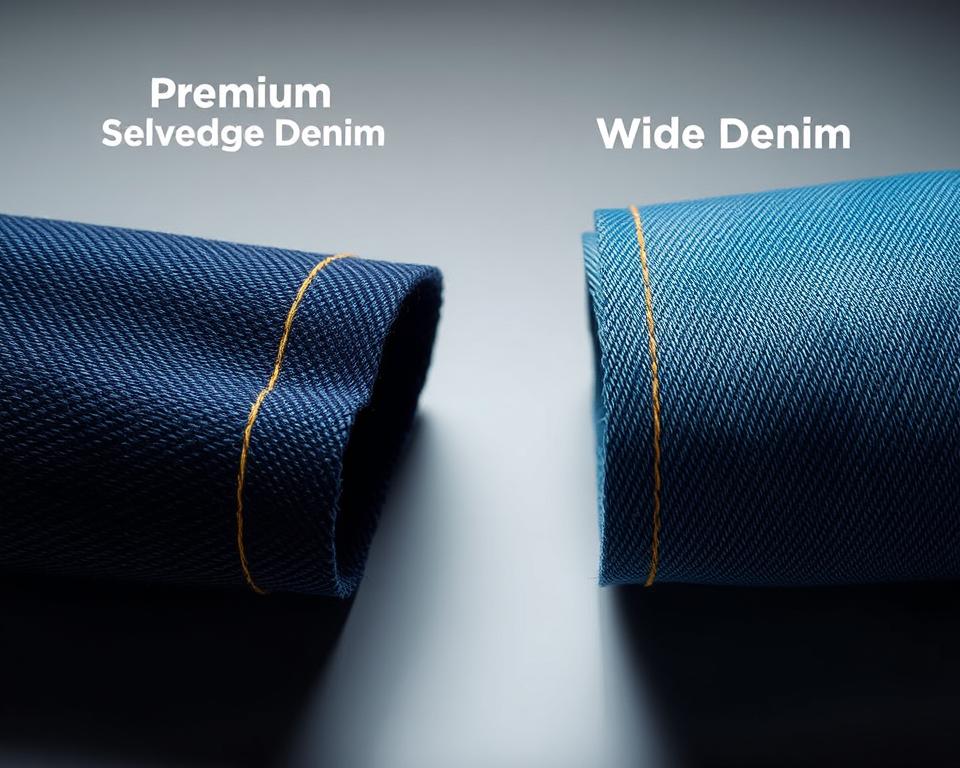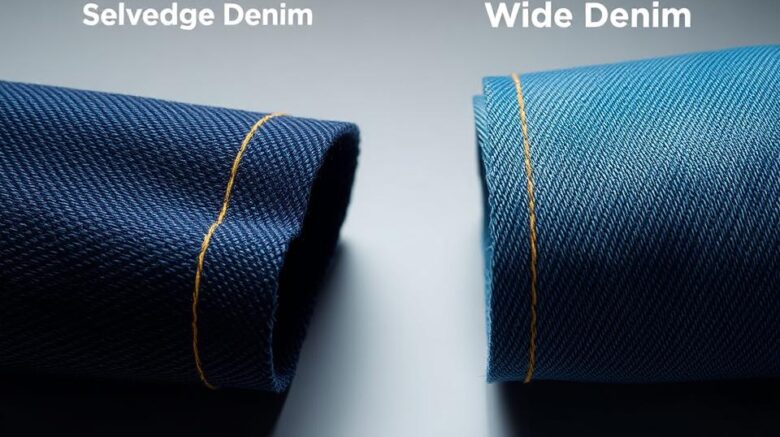A Comprehensive Manual for Premium denim Edge-to-Edge Textile
Have you ever pondered the reason certain pants seem like they’re designed for longevity a lifetime? The secret lies in the materials and skill. Take, for instance, the rising popularity of superior selvedge. It’s not merely ordinary textile—it attests to quality and legacy.
Today, more people are choosing these everlasting textiles for their durability and traditional ewingfly denim charm. Whether you’re a DIY sewist or a denim enthusiast, there’s a unique quality about using top-grade natural fiber and thread. It isn’t solely concerned with making pants; it centers on producing a narrative.
At Core Fabrics, we’ve assembled a collection of 14.25oz certified organic cotton and stretch choices. These materials are tailor-made for all from raw trousers to couture jacket blueprints. Prepared to dive into the world of top-tier fabrics? Let’s dive in.
Defining Denim Selvedge Fabric?
What makes particular trousers set themselves apart with their signature, naturally edged edges? The key resides in the selvedge denim, a premium fabric known for its enduring strength and retro aesthetic. In contrast to standard textiles, this fabric is produced with traditional methods that have proven their worth.
Understanding Selvedge Denim
Selvedge denim is created using old-style shuttle looms, which generate slender widths of about 30-35 inches. These looms weave the material in a method that delivers self-finished borders, often highlighted by a characteristic red line. This method confirms the textile is firmly crafted and extremely robust.
Contemporary looms, in contrast, generate broader fabric but do not offer the comparable degree of craftsmanship. Subtle irregularities in selvedge, like leg twists or irregular surfaces, are embraced as elements of its beauty. This philosophy, known as “wabi-sabi”, exalts the appeal of organic flaws.
Production of Selvedge Denim
The manufacturing of selvedge denim involves a meticulous process. Traditional shuttle looms interlace the filling yarns in alternating directions, forming a thick and resilient material. Unlike modern methods with contemporary machines, which prioritize rapid output over craftsmanship.
Labels such as Karson Denim uphold time-honored Japanese methods from the nineteen-nineties. They deliberately incorporate anomalies to preserve the genuineness of the material. Each piece is evaluated on a four-point system, ensuring it meets the highest standards of superiority.
| Characteristic | Selvedge Denim | Current Denim |
|---|---|---|
| Width | 30-35 inches | 60+ inches |
| Construction Technique | Traditional Shuttle | New-Age Loom |
| Finish | Non-uniform, Raw | Even |
| Durability | Superior | Average |
“The beauty of selvedge resides in its natural irregularities—every imperfection narrates a tale artistry and heritage.”
The Legacy of Selvedge Denim
From humble beginnings to worldwide renown, the narrative of these fabrics is vibrant and inspiring. Originally developed as durable workwear in 17th-century France transformed into a symbol of classic elegance and craftsmanship.
Origins in Traditional Weaving
The foundation of this fabric reaches back to Nîmes, France, where it was dubbed “serge de Nîmes.” First intended for the working class, it was constructed with hardwearing cotton and stitching. Its durability ensured its popularity among laborers during the historic Gold Rush.
During the twentieth century, it had become a essential element for pants. The closure of the Cone Mills White Oak plant served as a catalyst. This transition opened the door for Japanese artisans to restore old-world weaving methods.

Modern Developments in Denim
Post-WWII, Japan developed a deep appreciation for vintage American culture. Skilled workers repaired old looms to manufacture true reproductions. This devotion to craftsmanship guaranteed the survival of selvedge as a specialty product.
Today, innovations from Italy and Turkey have launched eco-friendly combinations and stretch variants. These modernizations have enhanced the appeal of this timeless fabric. Here at Core Fabrics, we source globally, from Montréal to Asia, to deliver to you the top-notch standards.
“Selvedge’s story is a tribute to the perennial merit of craftsmanship and legacy.”
Reasons to Select Selvedge Denim?
What makes selvedge denim shine in the realm of superior fabrics? Its unique qualities and unmatched durability render it popular among lovers and creatives alike. Whether you’re crafting trousers or a tailored jacket, this material offers a mix of tradition and modern appeal.
Characteristic Features of Selvedge
Selvedge denim is known for its firm interlacing, which enhances tear resistance and fade potential. Differing from regular textiles, denim selvedge fabric is crafted using traditional shuttle looms, yielding a denser and exceptionally sturdy fabric. In doing so, it secures that each piece has a singular finish and character.
Notable attributes are:
- Textured, firm raw denim contrasts with laundered, relaxed stretch options.
- Sanforization stabilizes the fabric for consistent measurements, while raw options offer a shrink-to-fit adventure.
- Variants include 9.5oz Eco Finish to 14.25oz Organic, suited for different needs.
Robustness and Endurance
One of the standout features of selvedge denim is its longevity. The dense fabric structure not only increases durability but also allows for unique fading patterns over time. This renders it a valuable investment for those seeking timeless pieces.
Important aspects:
- Fabrics weighing between 12oz and 14oz are perfect for form-fitting jackets and jeans that mellow with time.
- The 14.25oz True Indigo option is highly favored for enduring jeans.
- Green alternatives, including recycled cotton with indigo blends, contribute to a sustainable collection.
Within our range at Core Fabrics, diverse choices cater to distinct demands. Whether untreated or sanforized, every item is made to provide outstanding quality and performance.
Comparing Selvedge and Wide Denim
For making robust and fashionable apparel, the decision of material plays a crucial role. Two common choices include selvedge and wide denim, both offering different features. Comprehending their variances guides the ideal material for your endeavor.
Key Differences in Weaving Techniques
Selvedge denim is produced using classic shuttle looms, resulting in narrow widths of 30-35 inches. This herringbone denim material method generates secure finishes, often accented with a signature red line. Conversely, wide denim employs advanced projectile looms, resulting in spans of 60+ inches.
Shuttle looms are slower, producing about 3 meters per minute, while modern projectile looms reach speeds of 30 meters per minute. This difference in speed impacts both the price and the surface quality of the final product.
Pros and Cons of Each Type
Selvedge denim is known for its premium quality and durability. Its narrow width renders it perfect for applications where visible hems or patches are desired. However, it can be more expensive, typically around $23 per meter.
Wide denim is economical, typically costing $8 per half-meter. Its broader span minimizes excess, ideal for big-scale works like upholstery. However, it falls short of the distinctive selvage detail of selvedge.
| Characteristic | Selvedge Denim | Wide Denim |
|---|---|---|
| Width | 30-35 inches | 60+ inches |
| Weaving Process | Shuttle Loom | Modern Projectile |
| Rate | 3 meters per minute | 30m per minute |
| Expense | $23/meter | $8/half-meter |
When precise, structured edges are required—as in Grainline Thayer jackets—selvedge wins out. For larger projects, wide denim offers better value and efficiency. Evaluate your project specifications to choose wisely.
How to Use Selvedge Denim
Crafting with high-end textiles raises your projects to a new standard. Be it making trousers, blazers, or skirts, knowing how to measure, sew, and care for the material secures expert outcomes. We will examine ways to best utilize this timeless textile.
Fabric Quantities for Your Projects
Determining the proper yardage is key to a successful project. For men’s jeans, you’ll need about 3-3.3 yards, accounting for potential defects and shrinkage. Trucker jackets typically require 3.3 yards, while a skirt often needs 2 yards.
Innovative layout techniques can mitigate fabric flaws. Rather than avoiding imperfections, incorporate them into your pattern for distinctive style.
| Project | Required Yardage |
|---|---|
| Jeans for Men | 3-3.3 yards |
| Work Jacket | 3.3 yards |
| Dress | 2 yards |
Tips for Sewing and Care
Using the right tools and techniques ensures a polished result. Opt for #70-110 needle sizes and presser foot attachments made for robust textiles. For contrast stitching, Gütermann rPET thread is a reliable choice.
Additional advice includes:
- Use a tailor’s clapper for sharp creases without shine.
- Core Fabrics’ denim kits include topstitch thread, rivets, and 9mm jeans buttons for a professional finish.
- Structured edges, essential for jackets, are best achieved with selvedge.
Correct care ensures your garments last longer. Wash sparingly and air dry to maintain the material’s integrity. Following these guidelines guarantees enduring results.
As a Final Point
Working with high-end textiles is not solely about longevity; it’s about infusing character. Selvedge denim embodies this ideology, merging craftsman allure with enduring excellence. From jeans to tailored jackets, every stitch of this material conveys a narrative.
Core Fabrics simplifies your creative journey. Try our swatch service to feel the texture and weight before committing. Plus, enjoy free shipping on orders over $150 USD across North America.
Looking ahead, eco-friendly blends and vintage washes are shaping the future of cotton textiles. These trends offer new ways to add sustainability and style to your wardrobe.
Ready to dive into the world of premium materials? Begin your journey now and appreciate the merit of intentional crafting. Your subsequent creation may well become an enduring classic.
